| ~~~~~~~~~~~~~~~~~~~~~~~~~~~~~~~~~~~~~~~~~~~~~~~~
National Association of Rocketry
Educator's Newsletter
December 2018
~~~~~~~~~~~~~~~~~~~~~~~~~~~~~~~~~~~~~~~~~~~~~~~~ |
New Year's Opportunities
Another year has about gone but there are several things to be putting on your list to do for 2019. Your New Year plans should include getting certified as a NAR rocket teacher or 'narTcert'. Take a moment to visit the intro to narTcert at
Finally, you should be getting ready to celebrate the 50th anniversary of the Apollo 11 landing on the moon on July 20, 2019. We're proposing that schools and clubs have a "land the eagle" contest where the objective is to launch a model rocket and have it land on an area in a field representing the moon. The contestant whose rocket lands closest to the Tranquility Base target is the winner. Suggestions for hosting the event are at
http://www.nar.org/land-the-eagle-contest-for-schools/
There's a universe of rocketry education material available from NAR. Start your countdown to exploring it now.
Aim high!
Vince Huegele
NAR Education Chairman
|
|
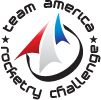 2019 Team America Rocketry Challenge (TARC) is underway
2019 Team America Rocketry Challenge (TARC) is underway
Team America Rocketry Challenge (TARC) is an aerospace design and engineering event for teams of US secondary school students (7th through 12th grades) run by the NAR and the Aerospace Industries Association (AIA). Teams can be sponsored by schools or by non-profit youth organizations such as Scouts, 4-H, Civil Air Patrol, or Air Force JROTC (but not the NAR or other rocketry organizations). The goal of TARC is to motivate students to pursue aerospace as an exciting career field, and it is co-sponsored by the American Association of Physics Teachers, Estes Industries, the Department of Defense, and NASA.
NAR Support to Team America Rocketry Challenge
The NAR asks all of its Senior (adult) members and its Sections to take an active role in supporting TARC. This event offers a tremendously rewarding opportunity to teach rocketry skills to bright and enthusiastic young people and to "pay forward" to a new generation of rocketeers for the support we once received from others when we were starting out in the hobby. Please use the attached publicity handout to get the word out about TARC. Details of the duties of a mentor or flight observer are available in our
Mentor Guide.
Mentors are adult (age 21 and above) members of the NAR who volunteer to serve as technical advisors and instructors or coaches to TARC teams. The role of the mentor is to get teams over the initial learning hump of mastering basic rocketry skills; they are not allowed to help teams with their final contest designs. Mentors may also serve as "qualification flight observers."
If you want to volunteer as a NAR Mentor, contact NAR TARC Manager Trip Barber.
Qualification flight observers are adult members of the NAR who watch a team's official "qualification flight" attempt at a mutually convenient time and place sometime before 8 April 2019. The observer verifies that the flight is conducted within event rules and that the egg payload is uncracked after flight, serves as one of the two stopwatch-equipped timers for the flight, and then records the flight duration and altimeter-reported altitude post-flight. He or she signs the official flight-report form, which is then sent in to the AIA. Qualification flight observers are under no obligation to also serve as a mentor to a team, although they may do so. Observers must be impartial; they cannot be related to any member of the team they observe, be employed by the team's school, or be a member of the team's sponsoring non-profit organization. Impartial adults may join the NAR (online if desired) simply for the purpose of being an observer, if a team is not otherwise able to locate an NAR adult member.
NAR Sections help by listing all of their launches on the NAR
"Launch Windows"
web page and by providing free access to these launches and use of Section or personal launch equipment for any TARC team that needs to do a test or qualification flight.
Only certain NAR-certified model rocket motors of total impulse class "F" and below are approved for flight use. They are enumerated in
this list.
NAR Site Owner Insurance
TARC teams needing "site owner insurance" (insurance which protects the owner of the land used for a rocket launch) in order to gain access to a flying site for their local test and qualification flights may get this through the NAR, just like NAR Sections (clubs) can do. This insurance is available only for actual landowners (including schools and school boards), not for school officials who are concerned about personal liability. It is available for $15, but only to teams whose teacher supervisor is a member of the NAR, and have at least three student team members who are members of the NAR. You can apply for site insurance using
this printable form.
narTCert
NAR will provide "narTcert" to any NAR member who is a professional classroom teacher with or without a science/math background, an educator teaching an after school program, a home school teacher or an informal educator with a youth organization. This means the opportunity is open to anyone who wants to teach rocketry on any level. The educator can be a total beginner or an experienced flyer, but both will have to undergo the certification process to be identified by NAR as being qualified to launch with students. Get started today.
NAR 4322 L3
TARC Manager
|

NAR Scholarship Program, Robert L. Cannon Award, and Extracurricular Activity Grant Awards
Did you know that if you are NAR member between the ages of 17 and 22 attending college or a vocational school that you may be eligible to receive a scholarship?
Are you a teacher or educator who uses model rocketry in the classroom? You are welcome to apply for a $500 grant to use in your program.
In 2001, the
NAR's scholarship and
Robert L. Cannon educational awards were inaugurated. Three NAR members received scholarships and two educators received Cannon awards. Over the years the number of award winners have grown. In 2015, a new program, the
NAR Extracurricular Activity Grant (EAG) was initiated to provide up to ten $500 grants for after-school activities, such as rocket clubs, scout, Civil Air Patrol, 4-H, or NAR section programs involving model rocketry. TARC teams are not eligible for these awards. This year we awarded ten $2000 scholarships, six $1000 scholarships, six Cannon $500 grants, and one Extracurricular Activity Grant (EAG).
The deadline for applying is June 1st.
Awards are announced at the annual meet (NARAM). You do not have to be present to receive an award.
|
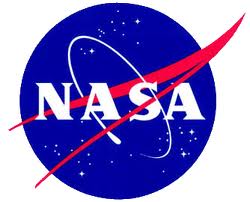 NASA
NASA
Education Materials Finder
NASA's Education Materials Finder will help teachers locate resources that can be used in the classroom. Users may search by keywords, grade level, product type and subject. With hundreds of publications and Web sites indexed, the finder is the best way to locate NASA educational resources. (
http://search.nasa.gov/search/edFilterSearch.jsp?empty=true)
NAR Education
How many ways can you have fun with rockets?
The NAR is all about having fun and learning more with and about model rockets. We are the oldest and largest sport rocketry organization in the world. Since 1957, over 80,000 serious sport rocket modelers have joined the NAR to take advantage of the fun and excitement of organized rocketry.
The Math Forum
Math Form Internet News
Having trouble keeping up with Math and Math Education on the Internet? The Math Forum
is here to serve as your gateway to the Net, giving you one-stop access to all the math resources you need and maintaining our own model pages and projects.
As a way to keep you informed about all that's going on we've created the Math Forum Internet News, an electronic newsletter sent out via e-mail once a week to those who
subscribe.
Each week you can expect to see suggestions of good sites to visit for mathematics and key issues in math education, or tips for what we have at the Math Forum and how to find it!
|
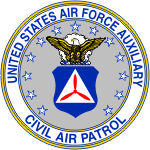 Civil Air Patrol Civil Air Patrol
Aerospace Library
Dedicated to promoting and sharing Aviation, Air Force, CAP & NASA History, the folks at the Civil Air Patrol have put together a fantastic library of rocketry resources!
Check it out
! CAP is a partner with NAR and supports TARC with many teams.
|
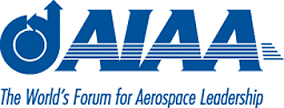
American Institute of Aeronautics and Astronautics (AIAA)
STEM K-12 Outreach
What is Aerospace Engineering?
Aerospace engineering is the branch of engineering focused on the design, construction, and testing of aircraft and spacecraft. It is broken into two major overlapping disciplines: aeronautical engineering (for vehicles that stay within Earth's atmosphere) and astronautical engineering (for vehicles that travel beyond Earth's atmosphere). Aerospace engineering applies the fascinating science behind the forces of nature and the physical properties of aircraft, rockets, and spacecraft. Check out these STEM K-12 resources.
|
|
National Association of Rocketry (NAR) offers Teachers and Youth Group Leaders Resources
|
|
Rocketry School Supplies Provided by Donors
As teachers, you know your students' needs best. Donorschoose.org is available to provide an avenue for public school teachers to submit project requests for the specific materials their students need to learn. As their name implies, donors choose which projects to support. Once a project is funded, they deliver the materials directly to the school. In return, teachers submit photos of the project in use and thank-you notes from students, which are then sent to the project's donors.
Apogee
If you want to keep on top of all the industry updates,
sign up here! Twice a month you will receive the email to the Industry Updates newsletter! This bi-weekly newsletter is for people who want to know what new rocketry products are being released by other rocketry companies besides Apogee Components. You may not find these products listed on our website, but this is where you'll find out about them first!
|
|
INSPIRING OTHERS:
Project Lead the Way (PLTW) expands to 3,400 K-12 schools
Project Lead The Way (PLTW) prepares students to be the most innovative and productive leaders in Science, Technology, Engineering, and Mathematics (STEM) and to make meaningful, pioneering contributions to our world. PLTW works with new schools and school districts to make sure that implementation of our rigorous curriculum is as smooth and streamlined as possible. The information packets for our
Engineering and Biomedical Sciences classes guide educators through the PLTW process. They contain course descriptions, sign-up information, and other tips to make PLTW a success at your school.
|
|
Other Scholarship Programs
Society of Women Engineers(SWE)
SWE Scholarships support women pursuing ABET-accredited baccalaureate or graduate programs in preparation for careers in engineering, engineering technology and computer science in the United States and Mexico. In 2015, SWE disbursed approximately 220 new and renewed scholarships valued at more than $660,000.
Great Minds in STEM (HENAAC)
HENAAC scholarship recipients continue to pave the way for future generations of Hispanics and lead by example to empower our communities and enhance our nation's professional technical workforce. Since its inception in 2001, the
HENAAC Scholars Program has experienced tremendous growth. In 2008, through the generous support of our program sponsors, we passed the $1M milestone in scholarship awarded. In 2013, GMiS passed the $2M scholarship milestone.
The application
deadline every year is APRIL 30
.
The HENAAC Scholars Program offers three types of scholarships: Corporate/Government Sponsored Scholarships, Special Recognition Scholarships, and In Memoriam and Personal Tribute Scholarships
National Society for Black Engineers (NSBE) Scholarships
The society offers a variety of
NSBE and Corporate-sponsored scholarship and award opportunities to our pre-college, collegiate undergraduate and graduate student, and technical professional members. Our scholarship packages range in value from $500 to $10,500. In addition to the scholarships, we also provide access to awards which acknowledge our highest achieving members, such as the Mike Shinn Distinguished Member of the Year (male and Female) Award with a cash award of $7,500, as well as the Alumni Member and Technologist of the Year. Each of these awardees also receive a Golden Torch Award from the organization.
Aerospace engineering
and aerospace technology scholarships from a variety of institutions and universities found
here as well as
here
.
GoodCall
GoodCall integrates data and technology to make finding scholarships easier for students and their families. And, unlike other scholarship search sites, we're totally free and open - no fee or account sign-up required.
View thousands of scholarships, filter results by specific requirements, and even search by competition level and entry difficulty.
|
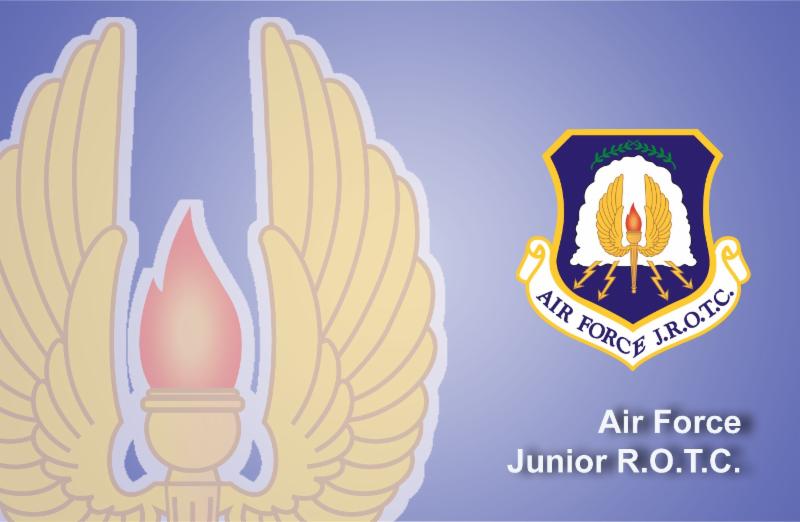 Air Force Junior Reserve Officer Training Corps (AFJROTC) Air Force Junior Reserve Officer Training Corps (AFJROTC)
TARC and AFJROTC
Get to know your AFJROTC Unit Commander or their education officer and see how you might work together to promote model rocketry.
To find your local unit,
look here
and the search engine will generate a map with unit locations and contact information. You can also do a simple web search to find the many AFJROTC rocket activities. Alternately, f
or more information on AFJROTC, contact AFJROTC Headquarters, 60 West Maxwell Blvd., Maxwell AFB, AL 36112-6501; phone 1-334-953-7513,
online
.
|
|
Estes
Reach For The Stars National Winners
Contestants in the seventh annual competition had to build and launch a solid-fuel powered rocket at an event held in their area by schools, YMCAs, Scouts, Challenger Learning Centers and other youth groups. The closest average landing (by parachute) to a target after two launches was declared the winner, with the local winner's results entered into the national Competition. The annual competition runs continuously and is open to ages 10 to 18.
Author Homer Hickam and the original Rocket Boys have kicked off the eighth annual Reach for the Stars -- National Rocket Competition at the October Sky Festival in Beckley, West Virginia. Competitions are already being held across the country, and local competitions can be held anytime throughout the year with a deadline at the end of June. For more details about the competition go to TheRocketman.net.
|

4-H
Engineering and Technology
The work of scientists and engineers impacts our daily life on so many levels,
but sometimes it's hard to isolate just how those professionals contribute to programs we watch on television or items we see in stores. 4-H uses its Filmmaking Studio and Workshop and STEM and Agriculture programs to help youth understand just how important an interest in science, engineering and mathematics is to advancing our society's access to new technology. The programs provide a unique opportunity to interact with the community through volunteer activities and avenues for the club to engage new mentors who are local industry experts. Hopefully many of these kids will want to further explore STEM subjects with rocketry. 4-H is a partner with NAR and supports TARC with many teams.
|
|
National Coalition for Aviation and Space Education
Cubes in Space
The only program in the world to provide students (ages 11-18) with a free opportunity to design experiments to be launched into space on a NASA rocket or balloon! This is a Science, Technology, Engineering, Arts and Mathematics (STEAM) based global education program, enabling kids to learn about space exploration utilizing innovative problem-solving inquiry-based learning methods. By participating in this program, students and educators are provided with engaging content and activities in preparation for the design and development of an experiment to be integrated into a small cube.
Since we first began the program in 2014, we have had over 5000 participants from 37 countries, and counting! Come join us!
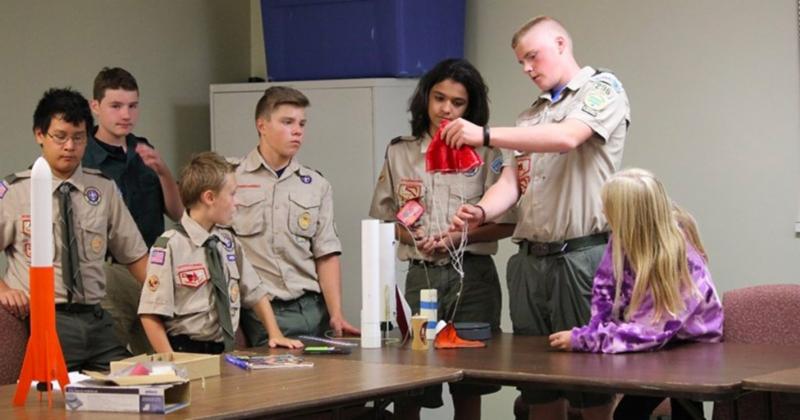 Why Scouts, Venturers will want to enter the world's largest student rocketry contest Why Scouts, Venturers will want to enter the world's largest student rocketry contest
Here's a way for young people to have a blast while gaining first-hand insight into the science, technology, engineering and math (or STEM) skills behind rocketry.
It's called the
Team America Rocketry Challenge
, and it's the world's largest student rocketry contest. Scouts and Venturers, even those with little or no experience building and launching their own rocket, are invited to enter.
To learn more, I spoke with Jeremy Davis, Team America Rocketry Challenge's manager of strategy and innovation. He recommends teams have their initial design finalized by the end of December. This way they'll do their building when it's too cold to launch in most parts of the country.
"They can spend those months building so that, as soon as the weather is good, they can start launching and doing their test flights," Davis says. Additionally,
the coolest part of the competition is it teaches not only physics and engineering skills, but also planning and organizational skills. It's not hard to see how this event intersects perfectly with Scouting.
Davis has heard from several troops working on their rocket during meetings. They make it a structured part of their troop activity.
"It goes hand in hand with what Scouting tries to teach with leadership skills and organization," Davis says. "Students are required to design, build and test themselves. There's no kit. There's no answer to the solution."
I wanted to hear from a troop participating in the competition, so I contacted Carl Curling, adult coordinator for the team fielded by members of Troop 295 of Woodbridge, Va.
Curling tells me this is the team's 11th time competing. Their best finish so far: 21st in 2017.
The Scouts average about 35 test flights a year, and "very few of the launches are entirely successful," Curling says. "But very few of them are major failures, either."
Each test is a learning opportunity. After they gather the rocket (or, in some cases, what's left of it), Curling explains how concepts of thrust, drag and design affected the end result.
But Scouts learn much more.
"Of course, most of the team members have completed or are pursuing the Space Exploration merit badge," he says. "But more than that, being on a team of Scouts has helped them bond together, solve problems that they couldn't even have conceived of earlier and reinforced many of the Scouting values.
What happens if Scouts want to enter but don't know an expert like Carl Curling?
"The
National Association of Rocketry
has hundreds of mentors all over the United States willing to help Team America Rocketry Challenge teams, so the initial lack of expertise can be overcome," Curling says.
Even if a troop or crew doesn't form a competition team this year, Curling says Scouting units benefit from building and launching rockets as a team.
"This is beyond STEM," he says. "It is STEAM - with the added "Art" of the craftsmanship of building a beautiful model and seeing it fly. So many skills are developed in the process, and so much fun can be had along the way. Go to your local hobby or craft store, get some kits and start flying.
|
|
Space History:
December 2, 1949: The United States Air Force first fired the Aerobee research rocket (RTV-A-1a) at Holoman Air Force Base.
December 10, 1959: U.S. Ambassador Lodge presented a resolution to the Assembly of the United Nations (U.N.) recommending that an international conference on the peaceful uses of outer space be convened within the next year or two. Two days later, the United Nations created a permanent 24-nation committee for this purpose.
December 17, 1969: The U.S. Air Force closed its 22-year investigation into sightings of unidentified flying objects (UFOs), otherwise known as Project Blue Book.
Dec 2, 1974: NASA's Pioneer 11 spacecraft flew by Jupiter, passing 26,725 miles above Jupiter's cloud top. The spacecraft returned dramatic images of Jupiter's famous Great Red Spot and determined the mass of Jupiter's moon, Callisto.
December 27, 1984: Members of the ANSMET (Antarctic Search for Meteorites) Project discovered meteorite ALH 84001 in the Allen Hills region of Antarctica. ALH 84001 is the famous Mars meteorite that sparked excitement in 1996 about past life on Mars.
December 26, 1989: A U.S. patent was awarded for the invention and construction method for the Miniature Traveling Wave Tube (TWT). This technology allowed satellites to carry a greater number of messages in a particular radio frequency signal, and resulted in commercial television applications.
December 18, 1999: NASA launched Terra, a weather satellite project undertaken jointly with Japan and Canada, on an Atlas rocket from Vandenberg Air Force Base. The 4,864 kg spacecraft was part of an international program and was intended to enable new research into the ways that Earth's lands, oceans, air, ice, and life function as a total system.
December 14, 2009: NASA
launched the Wide-field Infrared Survey Explorer (WISE) aboard the Delta II 7320 rocket from Vandenberg Air Force Base between 6:10 - 6:23 a.m. PST. This mission will survey the entire sky in the mid-infrared range, producing over a million images from which hundreds of millions of astronomical objects will be cataloged using far greater sensitivity than any previous mission or program.
 November 26, 2018 November 26, 2018:
Mars has just received its newest robotic resident. NASA's Interior Exploration using Seismic Investigations, Geodesy and Heat Transport (InSight) lander successfully touched down on the Red Planet after an almost seven-month, 300-million-mile (458-million-kilometer) journey from Earth.
InSight's two-year mission will be to study the deep interior of Mars to learn how all celestial bodies with rocky surfaces, including Earth and the Moon, formed.
InSight launched from Vandenberg Air Force Base in California May 5.
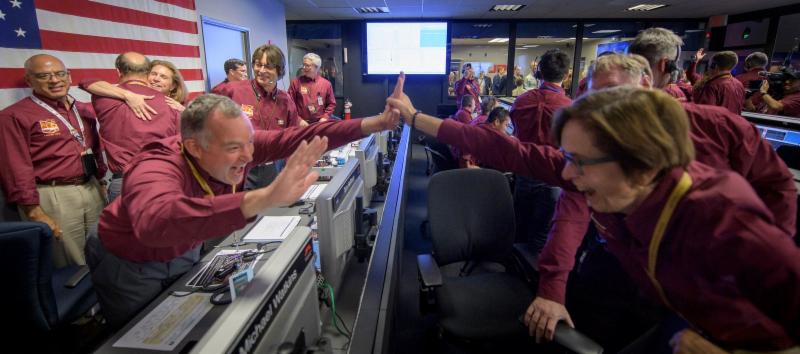 The lander touched down Monday, Nov. 26, near Mars' equator on the western side of a flat, smooth expanse of lava called Elysium Planitia, at 11:52:59 a.m. PST (2:52:59 p.m. EST). The spacecraft will begin to collect science data within the first week after landing, though the teams will focus mainly on preparing to set InSight's instruments on the Martian ground. At least two days after touchdown, the engineering team will begin to deploy InSight's 5.9-foot-long (1.8-meter-long) robotic arm so that it can take images of the landscape.
InSight will operate on the surface for one Martian year, plus 40 Martian days, or sols, until Nov. 24, 2020. The lander touched down Monday, Nov. 26, near Mars' equator on the western side of a flat, smooth expanse of lava called Elysium Planitia, at 11:52:59 a.m. PST (2:52:59 p.m. EST). The spacecraft will begin to collect science data within the first week after landing, though the teams will focus mainly on preparing to set InSight's instruments on the Martian ground. At least two days after touchdown, the engineering team will begin to deploy InSight's 5.9-foot-long (1.8-meter-long) robotic arm so that it can take images of the landscape.
InSight will operate on the surface for one Martian year, plus 40 Martian days, or sols, until Nov. 24, 2020.
 Two small MarCOs companion cubesats relayed InSight's telemetry and completed their mission objectives after their Martian flyby. Two small MarCOs companion cubesats relayed InSight's telemetry and completed their mission objectives after their Martian flyby.
With InSight's landing at Elysium Planitia, NASA has successfully soft-landed a vehicle on the Red Planet eight times.
|
|
| |
 Quick Links... Quick Links...
~~~~~~~~~~~~~~~~~~~~~~~~~~~~~~~~~~~~~~~~~~~~~~~~
|
|
| |
|